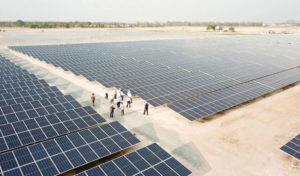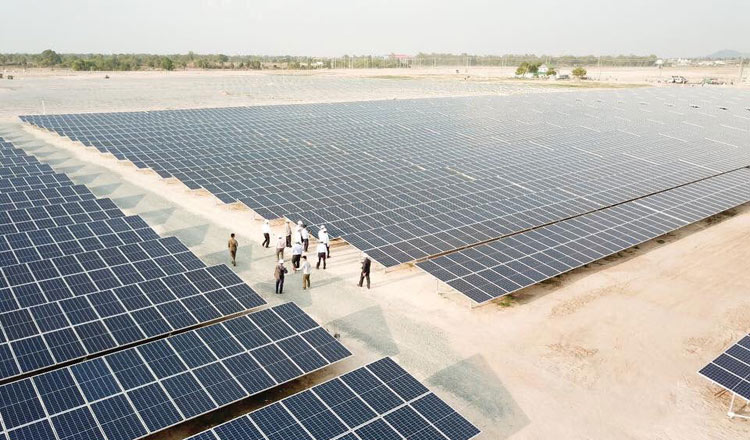
Cambodia targets 3,155MW from solar by 2040
The share of solar power in the total energy mix of Cambodia is poised to rise sharply in the coming decades and can reach 3,155 MW by 2040, bigger than the contribution from locally generated hydroelectricity which is a major source of renewable energy in the country now.
This was shared at a forum on ‘New Opportunities for Renewable Energy and Grid Reinforcement in Cambodia’ organised by VDB Loi in collaboration with the Malaysian Business Chamber of Cambodia (MBCC), Electricité du Cambodge (EDC), AmCham Cambodia, and Total Eren at Hyatt Regency Phnom Penh yesterday.
Keo Rottanak, Minister attached to the Prime Minister and Managing Director of EDC, in his keynote address said that the ‘Power Development Plan (PDP) 2022-2040’ proposes to raise the share of solar energy in the total power mix and that it was formulated in tune with Cambodia’s commitment to be carbon neutral by 2050.
According to the PDP, Cambodia currently has an installed solar power generation capacity of 432MW and by 2030 it will go up to 1000MW and from there to 3155 by 2040, indicating a proposed increase of nearly 800 percent over the period.
As per the plan, local hydropower will go up from 1,330MW now to 1,560MW by 2030 and 3000MW by 2040. Power from renewable biomass, another source of clean energy, will go up from 27MW in 2022 to 98MW in 2030 and 198MW in 2040.
Rottanak said that the private sector will play a major role in this energy transition for which huge investment is required, along with the support of the country’s development partners, adding that a project to generate 100MW of solar power will go for tender soon.
The EDC MD said that the country could achieve the target set for solar power even before the scheduled time plan considering the advancement in technology. This could considerably reduce Cambodia’s current dependence on coal and diesel-generated power.
Cambodia, he said, is even cautious about developing new hydropower projects. “We are a stringent opponent of any more hydro projects in Mekong River,” Rottanak pointed out, indicating the environmental concerns.
He also added that 99 percent of villages in Cambodia are electrified and 90 percent of the households are connected to the power grid.
Referring to the rise in the cost of power in recent years, mainly due to the Covid-19 pandemic and the Russia-Ukraine war, the EDC MD said, it will not raise the electricity tariffs, despite the revenue loss to the tune of $200 million.
AmCham President Anthony Galliano, in his opening remarks, brought attention to the climate crisis by pointing out that the 20 warmest years on record have been in the past 22 years.
“There is more carbon dioxide in our atmosphere than at any time in human history. Climate change is also creating a refugee crisis, as global temperatures increase, millions of people are fleeing their homes to avoid the impacts of droughts and extreme storms,” Anthony said while describing climate change as the greatest threat humankind has ever faced.
He, however, added that there is a trickle of hope with world leaders embracing the urgent need to accelerate actions to address the climate crisis, including emissions reductions.
“China, the world’s biggest annual carbon polluter, recorded an eight percent fall in emissions in the June quarter and a three percent cut year-on-year, the largest cut in Chinese carbon pollution in at least a decade. More people are now employed in clean energy than in the fossil fuel industry. Clean energy investment has grown by 12 percent a year since 2020, in part due to the rise of public and private support for sustainable finance,” Anthony said.
Edwin Vanderbruggen, Senior Partner of VDB Loi, was the moderator at the three-panel discussions held during the forum, attended among others by energy experts and industry stakeholders, including investors.
Source: https://www.khmertimeskh.com/501193938/cambodia-targets-3155mw-from-solar-by-2040/

